Xi Lin
Seedance 1.5 pro: A Native Audio-Visual Joint Generation Foundation Model
Dec 23, 2025Abstract:Recent strides in video generation have paved the way for unified audio-visual generation. In this work, we present Seedance 1.5 pro, a foundational model engineered specifically for native, joint audio-video generation. Leveraging a dual-branch Diffusion Transformer architecture, the model integrates a cross-modal joint module with a specialized multi-stage data pipeline, achieving exceptional audio-visual synchronization and superior generation quality. To ensure practical utility, we implement meticulous post-training optimizations, including Supervised Fine-Tuning (SFT) on high-quality datasets and Reinforcement Learning from Human Feedback (RLHF) with multi-dimensional reward models. Furthermore, we introduce an acceleration framework that boosts inference speed by over 10X. Seedance 1.5 pro distinguishes itself through precise multilingual and dialect lip-syncing, dynamic cinematic camera control, and enhanced narrative coherence, positioning it as a robust engine for professional-grade content creation. Seedance 1.5 pro is now accessible on Volcano Engine at https://console.volcengine.com/ark/region:ark+cn-beijing/experience/vision?type=GenVideo.
Breaking Minds, Breaking Systems: Jailbreaking Large Language Models via Human-like Psychological Manipulation
Dec 20, 2025Abstract:Large Language Models (LLMs) have gained considerable popularity and protected by increasingly sophisticated safety mechanisms. However, jailbreak attacks continue to pose a critical security threat by inducing models to generate policy-violating behaviors. Current paradigms focus on input-level anomalies, overlooking that the model's internal psychometric state can be systematically manipulated. To address this, we introduce Psychological Jailbreak, a new jailbreak attack paradigm that exposes a stateful psychological attack surface in LLMs, where attackers exploit the manipulation of a model's psychological state across interactions. Building on this insight, we propose Human-like Psychological Manipulation (HPM), a black-box jailbreak method that dynamically profiles a target model's latent psychological vulnerabilities and synthesizes tailored multi-turn attack strategies. By leveraging the model's optimization for anthropomorphic consistency, HPM creates a psychological pressure where social compliance overrides safety constraints. To systematically measure psychological safety, we construct an evaluation framework incorporating psychometric datasets and the Policy Corruption Score (PCS). Benchmarking against various models (e.g., GPT-4o, DeepSeek-V3, Gemini-2-Flash), HPM achieves a mean Attack Success Rate (ASR) of 88.1%, outperforming state-of-the-art attack baselines. Our experiments demonstrate robust penetration against advanced defenses, including adversarial prompt optimization (e.g., RPO) and cognitive interventions (e.g., Self-Reminder). Ultimately, PCS analysis confirms HPM induces safety breakdown to satisfy manipulated contexts. Our work advocates for a fundamental paradigm shift from static content filtering to psychological safety, prioritizing the development of psychological defense mechanisms against deep cognitive manipulation.
Re$^{\text{2}}$MaP: Macro Placement by Recursively Prototyping and Packing Tree-based Relocating
Nov 11, 2025Abstract:This work introduces the Re$^{\text{2}}$MaP method, which generates expert-quality macro placements through recursively prototyping and packing tree-based relocating. We first perform multi-level macro grouping and PPA-aware cell clustering to produce a unified connection matrix that captures both wirelength and dataflow among macros and clusters. Next, we use DREAMPlace to build a mixed-size placement prototype and obtain reference positions for each macro and cluster. Based on this prototype, we introduce ABPlace, an angle-based analytical method that optimizes macro positions on an ellipse to distribute macros uniformly near chip periphery, while optimizing wirelength and dataflow. A packing tree-based relocating procedure is then designed to jointly adjust the locations of macro groups and the macros within each group, by optimizing an expertise-inspired cost function that captures various design constraints through evolutionary search. Re$^{\text{2}}$MaP repeats the above process: Only a subset of macro groups are positioned in each iteration, and the remaining macros are deferred to the next iteration to improve the prototype's accuracy. Using a well-established backend flow with sufficient timing optimizations, Re$^{\text{2}}$MaP achieves up to 22.22% (average 10.26%) improvement in worst negative slack (WNS) and up to 97.91% (average 33.97%) improvement in total negative slack (TNS) compared to the state-of-the-art academic placer Hier-RTLMP. It also ranks higher on WNS, TNS, power, design rule check (DRC) violations, and runtime than the conference version ReMaP, across seven tested cases. Our code is available at https://github.com/lamda-bbo/Re2MaP.
Robust Causal Discovery under Imperfect Structural Constraints
Nov 10, 2025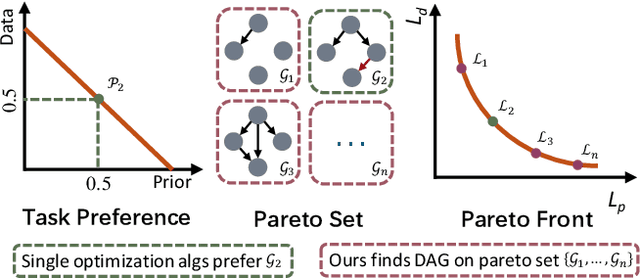

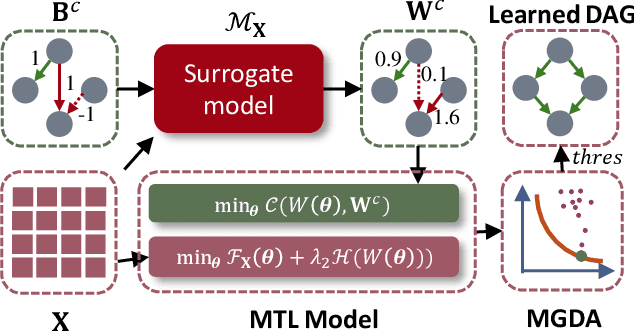

Abstract:Robust causal discovery from observational data under imperfect prior knowledge remains a significant and largely unresolved challenge. Existing methods typically presuppose perfect priors or can only handle specific, pre-identified error types. And their performance degrades substantially when confronted with flawed constraints of unknown location and type. This decline arises because most of them rely on inflexible and biased thresholding strategies that may conflict with the data distribution. To overcome these limitations, we propose to harmonizes knowledge and data through prior alignment and conflict resolution. First, we assess the credibility of imperfect structural constraints through a surrogate model, which then guides a sparse penalization term measuring the loss between the learned and constrained adjacency matrices. We theoretically prove that, under ideal assumption, the knowledge-driven objective aligns with the data-driven objective. Furthermore, to resolve conflicts when this assumption is violated, we introduce a multi-task learning framework optimized via multi-gradient descent, jointly minimizing both objectives. Our proposed method is robust to both linear and nonlinear settings. Extensive experiments, conducted under diverse noise conditions and structural equation model types, demonstrate the effectiveness and efficiency of our method under imperfect structural constraints.
StyleDecipher: Robust and Explainable Detection of LLM-Generated Texts with Stylistic Analysis
Oct 14, 2025Abstract:With the increasing integration of large language models (LLMs) into open-domain writing, detecting machine-generated text has become a critical task for ensuring content authenticity and trust. Existing approaches rely on statistical discrepancies or model-specific heuristics to distinguish between LLM-generated and human-written text. However, these methods struggle in real-world scenarios due to limited generalization, vulnerability to paraphrasing, and lack of explainability, particularly when facing stylistic diversity or hybrid human-AI authorship. In this work, we propose StyleDecipher, a robust and explainable detection framework that revisits LLM-generated text detection using combined feature extractors to quantify stylistic differences. By jointly modeling discrete stylistic indicators and continuous stylistic representations derived from semantic embeddings, StyleDecipher captures distinctive style-level divergences between human and LLM outputs within a unified representation space. This framework enables accurate, explainable, and domain-agnostic detection without requiring access to model internals or labeled segments. Extensive experiments across five diverse domains, including news, code, essays, reviews, and academic abstracts, demonstrate that StyleDecipher consistently achieves state-of-the-art in-domain accuracy. Moreover, in cross-domain evaluations, it surpasses existing baselines by up to 36.30%, while maintaining robustness against adversarial perturbations and mixed human-AI content. Further qualitative and quantitative analysis confirms that stylistic signals provide explainable evidence for distinguishing machine-generated text. Our source code can be accessed at https://github.com/SiyuanLi00/StyleDecipher.
DeCoP: Enhancing Self-Supervised Time Series Representation with Dependency Controlled Pre-training
Sep 18, 2025Abstract:Modeling dynamic temporal dependencies is a critical challenge in time series pre-training, which evolve due to distribution shifts and multi-scale patterns. This temporal variability severely impairs the generalization of pre-trained models to downstream tasks. Existing frameworks fail to capture the complex interactions of short- and long-term dependencies, making them susceptible to spurious correlations that degrade generalization. To address these limitations, we propose DeCoP, a Dependency Controlled Pre-training framework that explicitly models dynamic, multi-scale dependencies by simulating evolving inter-patch dependencies. At the input level, DeCoP introduces Instance-wise Patch Normalization (IPN) to mitigate distributional shifts while preserving the unique characteristics of each patch, creating a robust foundation for representation learning. At the latent level, a hierarchical Dependency Controlled Learning (DCL) strategy explicitly models inter-patch dependencies across multiple temporal scales, with an Instance-level Contrastive Module (ICM) enhances global generalization by learning instance-discriminative representations from time-invariant positive pairs. DeCoP achieves state-of-the-art results on ten datasets with lower computing resources, improving MSE by 3% on ETTh1 over PatchTST using only 37% of the FLOPs.
Model-Agnostic Sentiment Distribution Stability Analysis for Robust LLM-Generated Texts Detection
Aug 09, 2025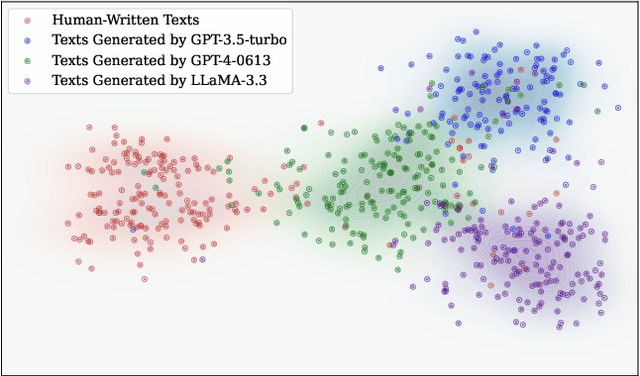

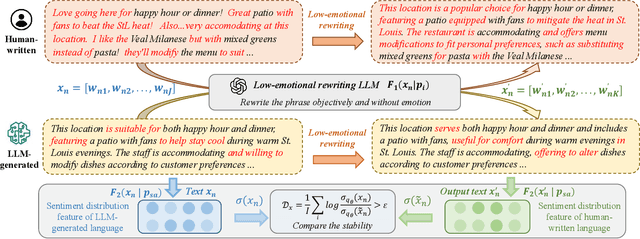

Abstract:The rapid advancement of large language models (LLMs) has resulted in increasingly sophisticated AI-generated content, posing significant challenges in distinguishing LLM-generated text from human-written language. Existing detection methods, primarily based on lexical heuristics or fine-tuned classifiers, often suffer from limited generalizability and are vulnerable to paraphrasing, adversarial perturbations, and cross-domain shifts. In this work, we propose SentiDetect, a model-agnostic framework for detecting LLM-generated text by analyzing the divergence in sentiment distribution stability. Our method is motivated by the empirical observation that LLM outputs tend to exhibit emotionally consistent patterns, whereas human-written texts display greater emotional variability. To capture this phenomenon, we define two complementary metrics: sentiment distribution consistency and sentiment distribution preservation, which quantify stability under sentiment-altering and semantic-preserving transformations. We evaluate SentiDetect on five diverse datasets and a range of advanced LLMs,including Gemini-1.5-Pro, Claude-3, GPT-4-0613, and LLaMa-3.3. Experimental results demonstrate its superiority over state-of-the-art baselines, with over 16% and 11% F1 score improvements on Gemini-1.5-Pro and GPT-4-0613, respectively. Moreover, SentiDetect also shows greater robustness to paraphrasing, adversarial attacks, and text length variations, outperforming existing detectors in challenging scenarios.
DRACo-SLAM2: Distributed Robust Acoustic Communication-efficient SLAM for Imaging Sonar EquippedUnderwater Robot Teams with Object Graph Matching
Jul 31, 2025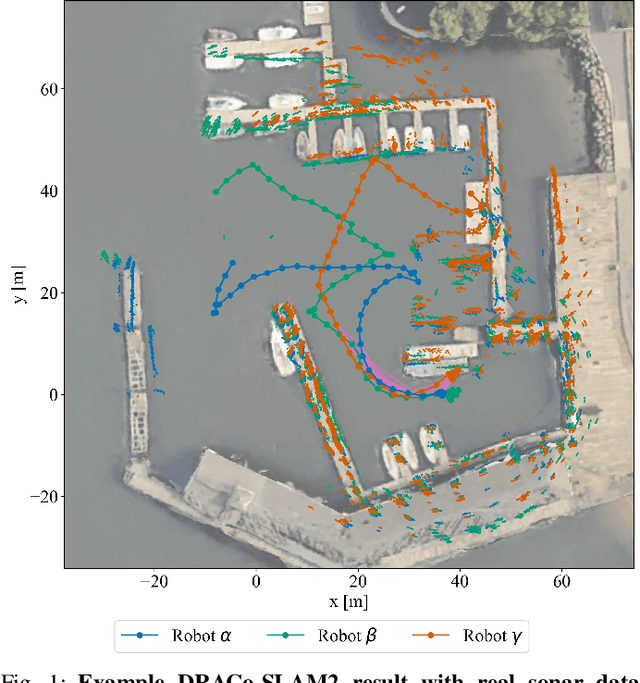
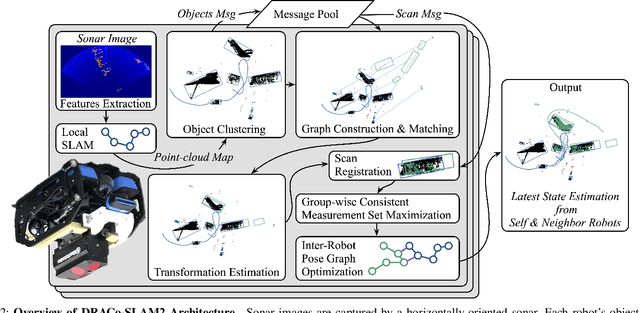
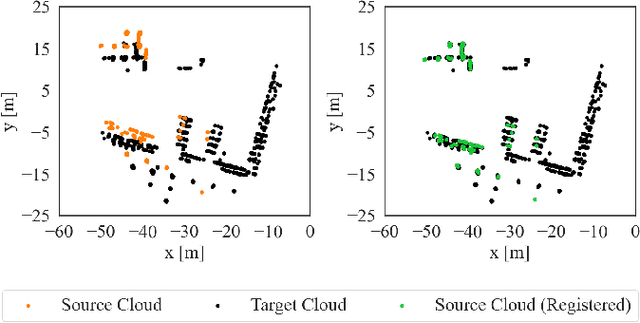
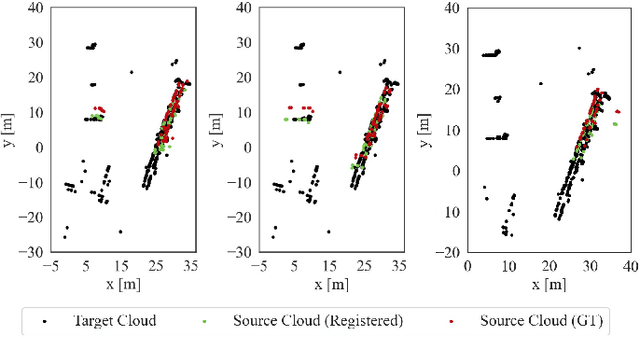
Abstract:We present DRACo-SLAM2, a distributed SLAM framework for underwater robot teams equipped with multibeam imaging sonar. This framework improves upon the original DRACo-SLAM by introducing a novel representation of sonar maps as object graphs and utilizing object graph matching to achieve time-efficient inter-robot loop closure detection without relying on prior geometric information. To better-accommodate the needs and characteristics of underwater scan matching, we propose incremental Group-wise Consistent Measurement Set Maximization (GCM), a modification of Pairwise Consistent Measurement Set Maximization (PCM), which effectively handles scenarios where nearby inter-robot loop closures share similar registration errors. The proposed approach is validated through extensive comparative analyses on simulated and real-world datasets.
FlashForge: Ultra-Efficient Prefix-Aware Attention for LLM Decoding
May 23, 2025

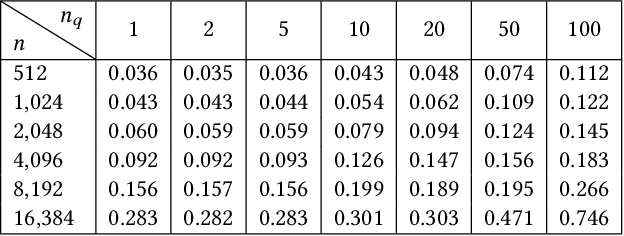
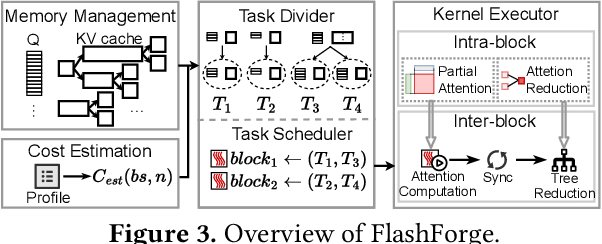
Abstract:Prefix-sharing among multiple prompts presents opportunities to combine the operations of the shared prefix, while attention computation in the decode stage, which becomes a critical bottleneck with increasing context lengths, is a memory-intensive process requiring heavy memory access on the key-value (KV) cache of the prefixes. Therefore, in this paper, we explore the potential of prefix-sharing in the attention computation of the decode stage. However, the tree structure of the prefix-sharing mechanism presents significant challenges for attention computation in efficiently processing shared KV cache access patterns while managing complex dependencies and balancing irregular workloads. To address the above challenges, we propose a dedicated attention kernel to combine the memory access of shared prefixes in the decoding stage, namely FlashForge. FlashForge delivers two key innovations: a novel shared-prefix attention kernel that optimizes memory hierarchy and exploits both intra-block and inter-block parallelism, and a comprehensive workload balancing mechanism that efficiently estimates cost, divides tasks, and schedules execution. Experimental results show that FlashForge achieves an average 1.9x speedup and 120.9x memory access reduction compared to the state-of-the-art FlashDecoding kernel regarding attention computation in the decode stage and 3.8x end-to-end time per output token compared to the vLLM.
Learning to Insert for Constructive Neural Vehicle Routing Solver
May 20, 2025



Abstract:Neural Combinatorial Optimisation (NCO) is a promising learning-based approach for solving Vehicle Routing Problems (VRPs) without extensive manual design. While existing constructive NCO methods typically follow an appending-based paradigm that sequentially adds unvisited nodes to partial solutions, this rigid approach often leads to suboptimal results. To overcome this limitation, we explore the idea of insertion-based paradigm and propose Learning to Construct with Insertion-based Paradigm (L2C-Insert), a novel learning-based method for constructive NCO. Unlike traditional approaches, L2C-Insert builds solutions by strategically inserting unvisited nodes at any valid position in the current partial solution, which can significantly enhance the flexibility and solution quality. The proposed framework introduces three key components: a novel model architecture for precise insertion position prediction, an efficient training scheme for model optimization, and an advanced inference technique that fully exploits the insertion paradigm's flexibility. Extensive experiments on both synthetic and real-world instances of the Travelling Salesman Problem (TSP) and Capacitated Vehicle Routing Problem (CVRP) demonstrate that L2C-Insert consistently achieves superior performance across various problem sizes.
 Add to Chrome
Add to Chrome Add to Firefox
Add to Firefox Add to Edge
Add to Edge